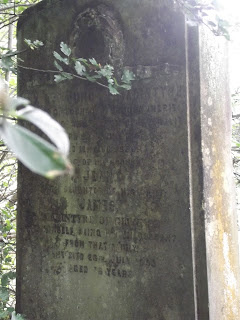Nau
mai haere mai
Te reo Māori has been recognised in New Zealand as an official language since 1987. For many years speaking
it was almost outlawed, but slowly it has been revived and continues to become
stronger.
When
I was at primary school we learnt to count, sang songs (waiata), days of the
week, colours, played stick games (ti rākau) and learnt simple weaving (raranga)
and poi. We grew up using words as part of our everyday language that I didn’t even
realise were Te Reo until I was an adult. There are plenty: e hoa, taihoa, ka
pai, pakaru, kai, waewae, taringa, aroha, hikoi even before all of the place
names and landmarks.
Nowadays,
there are totally immersive preschools and schools like Kōhanga Reo. Most
schools have kapa haka groups. Haka is well known around the planet, especially
associated to sport like rugby. It is just part of who we are, as New Zealanders,
no matter whether we are Māori or
not. Our pronunciation has improved and changed over time as we become more
aware of HOW words should be pronounced and of the rhythm of the language.
At
school, children learn their mihi, a short introduction about themselves; where
they come from and what they identify with, who their parents are. These are
often developed over time and may be used outside of school in workplaces and
other meetings as adults.
Tēnā koutou katoa
Ko
Taupiri tōku maunga
Ko
Waikato tōku awa
Ko
Oriental tōku waka
Ko
Les tōku pāpā
Ko
Lis tōku māmā
Ko
Claire tōku ingoa
Nō
reira tēnā koutou, tēnā koutou, tēnā koutou katoa.
First
you greet everyone, then you name your mountain, your river and sometimes your
sea or lake; the places that you identify as home.
Then
you say how you or your family travelled to New Zealand (Aotearōa),
traditionally by ship (waka), and what your tribe (iwi) is, if you have one.
Then who your parents are, then finally your name. (often at school you will
also say the name of your school)
When
reciting your mihi you always come last, because without all that comes before
you – your parents, your family, the land and river to which you belong – you
are nothing.
A
more complex mihi is a pepeha where your entire family tree (whakapapa) is
recited. Māori was not a written language before European settlement. For Māori
knowing their whakapapa is integral to knowing where they belong; who they are.
It was all passed on generation to generation orally.
I
have written a very simple mihi pepeha (hopefully correctly) to demonstrate.
Ngā
mihi nui kia koutou katoa
Ko
Taupiri tōku maunga
Ko
Waikato tōku awa
Ko Whanganui-a-Tara
tōku moana
Ko
Oriental tōku waka
Nō
Kirikiriroa ahau
Ko
Davys tōku whānau
Ko
Les tōku mātua
I
te tahi o tōku mātua
Ko
Ruth tōku kuia
Ko
Walter tōku koroua
Ko
Lis tōku whāea
I
te tahi o tōku whāea
Ko
Elsie tōku kuia
Ko
Albert tōku koroua
Ko
Claire tōku ingoa
Ko
Bendigo tōku kāinga
Ko
taku hiahia ko te whakapapa
Nō
reira
Tēnā
koutou, tēnā koutou, tēnā koutou katoa.
Warm
greetings to everyone
My
mountain is Taupiri
My river is Waikato
Wellington
Harbour is my sea
The
Oriental is my ship
I
am from Hamilton
My
family is Davys
My
father is Les
In my father’s family
Ruth
is my grandmother
Walter
is my grandfather
In
my mother’s family
Elsie
is my grandmother
Albert
is my grandfather
My
name is Claire
I
live in Bendigo
My
hobby is genealogy
That
is all
Greetings
to you all, greetings to you all, greetings to you all.
I’m
never sure 100% sure about my mountain. My grandfather was born near Mangawara Stream at the base
of Taupiri Mountain. The mountain is sacred (tapu) to Māori, and driving past
always feels like I am arriving or leaving the Waikato region.
The
Waikato River flows through Hamilton, where I was born, and north past Taupiri; so it
has to be my river.
I
spent my teenage years in Wellington, and I love that harbour and coastline, so
I identify with that as my body of water.
The
Oriental was the sailing ship which bought the first of my families from
England to New Zealand -to Wellington in fact.
Going
back up my family tree each of the previous 2-3 generations would likely have
had different mountains, rivers and ships to which they identified, some even
back in England or Ireland.
Māori have a much longer association with Aotearōa. Even if they have moved about more recently, they still identify with a marae or river or mountain that has been significant to their whānau for generations.
Māori have a much longer association with Aotearōa. Even if they have moved about more recently, they still identify with a marae or river or mountain that has been significant to their whānau for generations.
I
love the richness of Tikanga Māori and the tapestry that is woven into our
lives too.






